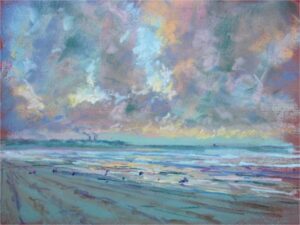Sit with soft pastels for five minutes—watch your pulse slow, your shoulders lower, your jaw unclench. Pastel painting, or 和諧粉彩, is no stormy oil canvas or frenetic watercolor wash. It’s gentle, familiar, almost whispering. Each drag of pigment calms the nerves in a way that’s oddly addicting yet soothing. If you recall the chalky dust on childhood fingers, smudged classroom doodles, you already know the allure. But beyond memory and nostalgia, pastel art workshops offers a direct route to mindful creativity.

Pastels are simple. They come in sticks, so you need little more than sturdy paper, a smock, perhaps a cup of tea. Big brands like Sennelier or Rembrandt boast about their smooth softness—qualities that matter if you want color layers that melt into one another. The process isn’t fussy, either. There’s freedom in messiness here. Let hands blend color, let dust mingle, let lines blur. Creativity flourishes when the pressure to produce “art” evaporates.
Imagine yourself painting a soft sunset or a basket of lilacs. You’re not just capturing a view. You’re slowing down enough to notice new shades in the air: a whisper of rose in the shadows, a sneaky yellow hidden under lavender. Researchers with the American Arts Therapy Association say hands-on art like pastels can reduce cortisol (the stress hormone). One 2021 study in Frontiers in Psychology found significant reductions in self-reported anxiety after just 45 minutes of direct art-making. Inhaling those calm moments, you end up with a finished piece—and a reset mind.
No need to be an expert. In 和諧粉彩 classes, beginners find encouragement around every corner. Instructors emphasize soft strokes and gentle blending over technical skill. The medium’s forgiving nature helps erase the fear of “getting it wrong.” Mistakes turn into background haze or happy accidents. “Good enough” becomes “exactly right.”